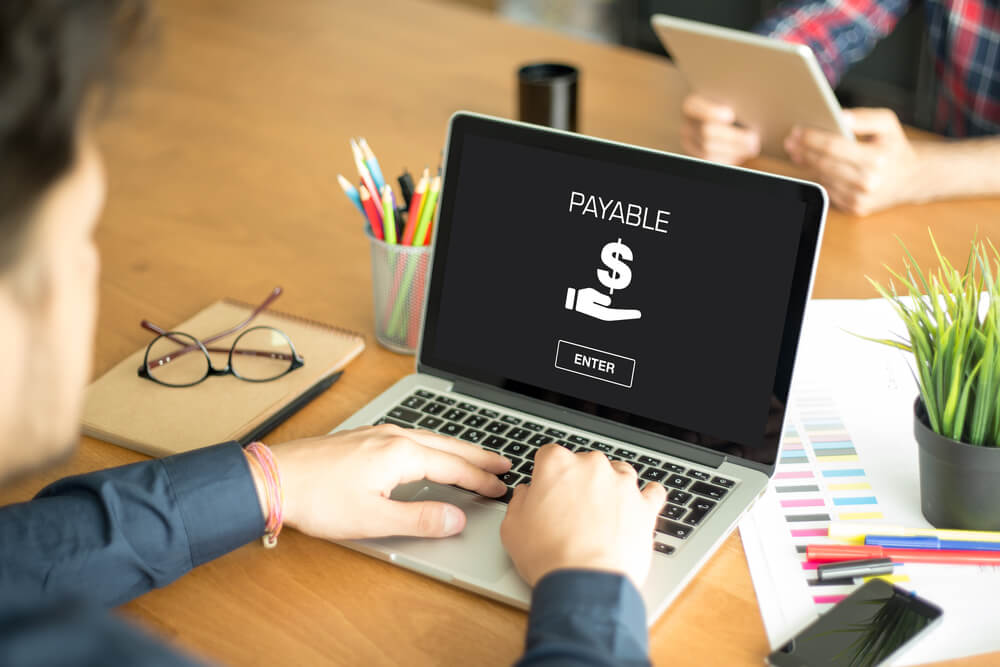When you’re working on your startup, you’re going to need to raise some money. Raising capital is a necessary step if you want to get your business off the ground and make it a success. You’ll be looking for investors who are willing to take a chance and put their money behind your idea.
But what if you haven’t launched your business yet? What if you just have an idea that is still in development? In these cases, you might be looking for pre-seed funding.
The pre-seed funding process can be challenging, but it isn’t impossible. While it can be an uphill battle to get the backing of investors for an unproven business model, there are things you can do to help increase your chances of finding someone who believes in your idea enough to give it a shot.
If you’re thinking about raising pre-seed capital for your startup, then this guide will cover how to raise pre-seed funding.
Table of Contents
ToggleWhat is Pre-Seed Funding?
A company that has not yet generated any revenue, but is looking to expand its operations, needs funding. You might have heard of seed funding, which is usually the first round of financing after a company incorporates and before it generates any revenue. Pre-seed funding occurs before seed funding and is the first money a startup receives.
The pre-seed stage is the first stage of capital raising for startups. It’s also called angel funding or angel investment. It’s not a loan; it’s a cash infusion to get your business started. Sometimes it can be a gift from family or friends who want to help out. Other times it can be that initial investment from an angel investor—a wealthy individual willing to risk their own money on your business idea.
This early funding can help get a product to market, develop a prototype, or prepare for seed-stage financing. Money raised in this stage is also used to help get the company off the ground, such as hiring an initial team and starting to build partnerships and relationships with potential customers.
The key to this stage is not about how much money but about having enough money to prove your idea works and that you have a viable business model. The goal here is not to scale but convincing investors that you can successfully scale with the right amount of capital. Your pre-seed money will cover whatever you need – office space, equipment, marketing materials, and maybe even salaries for your first employee or two.
What’s the Difference Between Pre-Seed and Seed Funding?
The two most essential fundraising rounds for a startup are the pre-seed round and the seed round. The success depends on how much money can be raised, which investors the company can get to support them, and how much equity or stake in the company the startup is willing to give up. As you can imagine, these three components are interrelated.
Pre-seed funding is the earliest stage of venture capital (VC) funding. It typically comes from angel investors or founders themselves and is used to pay for market research and product development. This is generally the first outside money raised by a startup, though it’s often supplemented by other sources of financing such as personal savings or loans from friends and family.
Entrepreneurs are still refining their business model and proving their concept in this stage. They may not have an actual product yet, but they do have a plan for the development that needs to be tested to move forward.
Seed funding is raised after a company has launched its product and is looking to build traction and scale. Seed money is generally used to improve marketing and sales, grow the team, and improve the product. This round of funding typically comes from angel investors and VCs as well.
What Is the Purpose of Pre-Seed Funding?
Pre-seed funding is a type of startup financing an individual or group of investors usually provides that enables the entrepreneur to get their idea off the ground, generally in exchange for equity in the company.
Pre-seed funding aims to help entrepreneurs take their ideas and make them a reality. A lot goes into making a business happen. It takes money, time, and resources to bring an idea to fruition, and pre-seed funding provides all three of these things.
Pre-seed funding allows entrepreneurs to hire a team before making any sales. Without this money, they would be unable to recruit employees or pay them while they work on building their company’s infrastructure. It also provides the funding needed to build a prototype or demo, which could be very expensive depending on the industry it’s being used for. Often, there are additional costs associated with starting a business that must come out of pocket without this type of investment.
Hypothesis Validation
When you’re starting a business and developing your product, it makes sense to test your hypothesis.
A pre-seed round is a relatively small amount of funding that can be used to validate your product, service, or business model before you go and raise a seed round. Investing pre-seed funds enables you to prove your hypothesis, test your assumptions, and demonstrate your business model’s viability before you raise a larger round.
Gaining Key Stakeholders
One reason pre-seed funding can be so valuable besides the obvious one of gaining cash is that it helps attract other stakeholders who might not otherwise invest in your vision.
When venture capitalists see that someone else has already expressed interest in your startup, they’re more likely to do their homework and investigate what’s going on with your company. Once they see that you have some momentum, they’ll be more likely to offer additional funding for the following stages.
When Is the Right Time to Raise a Pre-seed Round?
Not all startups need pre-seed funding. They might already have enough capital to complete their first product cycle, or they might not have much more than an idea and a firm founder’s vision. But if you’re at the beginning of putting together your team and have a minimum viable product that you need more cash to develop, you may consider raising some pre-seed funding.
There are a few signs you can look for to determine if this is the right time for your company.
You Have a Well Defined Idea
The most important thing about raising pre-seed funding is having a solid idea with an outlined plan for its development and eventual market entry. It’s hard to convince investors that you’ll be successful without a clear picture of how you’ll turn your concept into reality.
You Have Some Traction
Ideas are great, but pre-seed investors want proof that there’s demand for what you’re building, which means you should have evidence of users engaged with your product or service in some capacity. This doesn’t mean your service needs to be fully operational; it could just mean that people have signed up on a mailing list and are waiting for beta testing to begin or downloading some of your software.
The right time to raise a pre-seed round depends on your goals, but in general, it’s the point at which you have a clear idea of what your company does and why it’s going to be valuable to consumers; you’ve tested the idea with consumers yourself; you’ve got some initial traction on your product, and you’ve laid out a plan for how you’ll use the money.
It’s essential that all these things are in place before you begin the fundraising process because they can take months to prepare and perfect.
How Much Pre-Seed Money Should You Raise?
You’re thinking about raising a small amount of money (less than $1M) to get your idea off the ground at the pre-seed stage. Your goal is to raise just enough to get your product up and running so you have a proof of concept to show investors that your product is viable.
You’ll probably also need some extra money for living expenses for yourself and any co-founders. You should also try to raise enough money, so you have enough runway to raise the next round of funding.
For example, if investors typically take three months to make an investment decision, then you’ll want at least six months of runway in case you don’t get the next round of funding.
Now, let’s say your company is building a social network app, and your goal is to launch a beta version of the app in 6 months. Let’s assume your burn rate is $20k per month.
This means you’ll need ($20k x 9 months). So you’d need at least $180k total, but it’s probably safer to raise more than that so you can have a rainy day fund or hire an additional team member if you need one later on.
5 Reputable Sources of Pre-Seed Funding
Many founders want to know how to get to the next stage—but getting your first dollars is just as important. Without some form of pre-seed funding, you’re stuck at square one, with no way to get your idea off the ground.
For this reason, aspiring entrepreneurs need to learn about all the different sources of pre-seed funding available. Here are five options to consider.
Angel Investors
Angel investors are high-net-worth individuals who invest their own money in a business. They’re called “angels” because they’re the ones who step in to provide the initial funding when no one else will, and they’re great at what they do because they’re usually seasoned entrepreneurs themselves.
Angel investors can be a great source of funding because they’re generally easier to deal with than venture capital firms since angel investors make up a much smaller community than venture capitalists do and are more likely to understand your company’s vision than an institutionalized venture capital firm that might be less personal.
Angel investors tend to spend a lot more time with the company they invest in, which can be very helpful when you’re starting. On the other hand, angel investors can be challenging to find because their networks aren’t as established as venture capitalists.
Angel Investors are a great source of pre-seed funding, but they can be challenging to get. You’ll need to convince them that your company is worth investing in, and they’re often looking for companies that have a chance to go big—or at least bring in a lot of money. Angel Investors will typically be interested in seeing your business plan and knowing that you’ve done your market research, so make sure you have those things in order before approaching anyone.
If you want to get in front of Angel Investors, the Angel Capital Association (ACA) is a great place to start. The ACA is a national network of angel investors committed to growing investment in startup companies. The ACA also hosts conferences where you can meet and pitch to potential investors, and their website has tools for connecting with angels when you’re not able to make it to a conference.
AngelList is another resource for finding Angels. The site allows you to create an online profile describing your company and capital needs. You can then browse through the profiles of accredited investors who have signed up on the site and are willing to invest in your industry or region. When you find someone who might be interested in your company, you can reach out directly from the site itself.
You can also check out local resources for entrepreneurs like incubators and accelerators, which often help connect their members with Angels by hosting events like pitch nights or office hours.
If there are any business schools near you, look into their entrepreneurial programs; they also often host events where Angels can meet entrepreneurs and vice versa.
Pre-Seed VC Funds
Venture capitalists make money by investing in startup companies and small businesses with strong growth potential. As you can see from the name, venture capitalists take a “venture” into your business, believing that you have a great concept and predicting that the company will grow and be profitable.
The venture capitalists will typically get equity (ownership) in your company in return for their investment. A venture capital fund is a pooled investment vehicle that primarily invests the financial capital of third-party investors in enterprises that are too risky for the standard capital markets or bank loans.
Venture Capitalist funds like Y Combinator, Accel, and Sequoia Capital are one of the most popular sources of funding for seed-stage startups. They usually invest in startups with a strong founding team with a proven track record or solving a problem in an area the VC is familiar with.
If your startup meets either of these criteria, you have a good chance of landing funding and getting access to their network.
Friends and Family
A little bit of money from someone close to you can go a long way, and if you’ve got friends and family who are willing to invest, why not take advantage? It’s not always easy asking for favors, especially when it involves asking a lot of money, but if you approach it correctly, getting pre-seed funding from your friends and family can be one of the best options to raise funds for your startup.
When starting your business, it’s normal to turn first to the people you know and trust but be careful. When someone invests in your company, even if it’s just $1,000, they are now part owners of the business, and their investment has the potential to fail.
Unfortunately, not all friendships or family ties can survive the stress of a failed business.
Do everything you can to protect your relationships when seeking funding from those closest to you. Get all details in writing, have a lawyer draw up an agreement, and make sure everyone understands what they are getting into before handing over any cash.
Crowdfunding
Crowdfunding, a process of raising funds from a collection of people over the internet, has become one of the most popular methods of obtaining financial support from investors.
Crowdfunding sites like Kickstarter and Indiegogo have become go-to spots for hopeful entrepreneurs looking to raise money for their start-ups.
If your product will appeal to a large group of people, crowdfunding is a great way to raise money for your startup. Using a site like Kickstarter or Indiegogo, you can set a funding goal and deadline for contributors to reach that goal.
If you do not get your goal by the deadline, no money changes hands, and the campaign fails.
If you meet or exceed your funding goal, then those who contributed get their money back plus whatever perks they were promised in return for their investment.
The best part is that if enough people think your idea is worth investing in, they will pay what it takes to make it happen—even more than you asked for.
Accelerators and Incubators
If you’ve got a promising, early-stage idea and need some help getting it off the ground, one option is to find an accelerator or incubator that you can partner with.
Startup accelerators and incubators are programs that focus on mentorship, networking, and assisting new entrepreneurs in honing their skills and growing their businesses. An accelerator is usually a short-term program that focuses on rapid growth and has a set beginning and end date. They generally require you to be present for the duration of your participation but don’t take any equity in your company. In some cases, they’ll provide funding as well.
Incubators offer similar services but usually don’t invest any money. Incubators, on the other hand, tend to give you more space to grow at your own pace and have a larger focus on networking opportunities than accelerators do. It’s common for them to take equity in exchange for their services.
Startups enter generally these programs at an early stage of development. To get into most accelerators or incubators, you’ll need to apply—sometimes, there’s an application fee.
What You Need to Raise Pre-seed Funding
It’s no secret that most new startups have to raise money at some point to grow. One of the first stages in this process is the pre-seed stage, where a company raises capital to get things moving and prepare for more severe growth.
This stage can be challenging for any entrepreneur because at this point, you probably don’t have anything much more than an idea. But with a bit of careful planning and foresight, you can set yourself up for success and hopefully get the boost your business needs to flourish.
To get pre-seed funding, the first thing you’ll need is a product. You don’t necessarily have to have a fully functioning beta, but you’ll need something tangible to demonstrate your product’s viability to your potential investors.
If you’ve got an idea that’s still being ironed out, that’s okay too—you just might want to wait until it’s more solid before requesting funding.
You’ll also need some sort of solid traction—that could be a large social media following and high traffic to your site, or it could be testimonials from people who have used and enjoyed your product.
This is especially important if you’re trying to raise money for a product that doesn’t yet exist. It’s proof that the demand for what you do or sell is there, and it can help back up your claim that your business will be profitable.
Finally, you’ll need an investor deck. This is basically like a resume for your business. It will include detailed descriptions of the problem your product solves, information about the market you’re targeting, and profiles of everyone who works at the company, including their experience in related fields.




No comment yet, add your voice below!